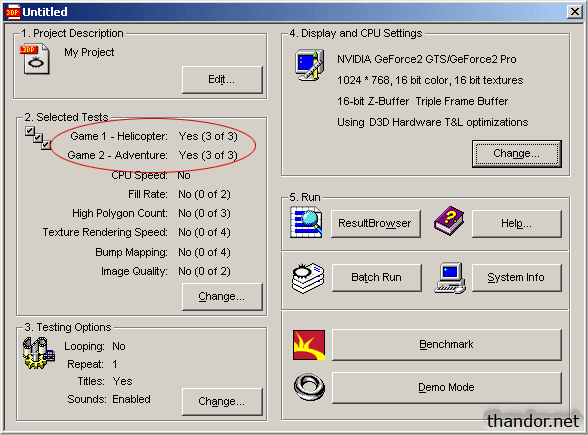3DMark2000 is a synthetic DirectX 7 benchmark and doesn't always represent real-life performance. It's very CPU-limited so you'll need a fast CPU to max out your graphic card. This means a GeForce4 Ti4200 will probably get the same results as a Radeon 9800 Pro if you benchmark it with a slow Pentium II CPU.
I used both a Pentium II 450 and a Pentium III-S 'Tualatin' 1400 CPU to benchmark graphic cards. In any case the scores with the Pentium III-S 1400 CPU were much higher. Also cards with more MB of RAM score higher which isn't always the case in real-life applications.
Keep in mind that the 3DMark2000 score will greatly increase on cards that feature hardware texture and lightning (T&L). Back in the year 2000 only a few games supported T&L, causing the 3DMark2000 score to be less accurate compared to real world games.
My benchmark method
To benchmark with 3DMark2000 I use the default settings unless I want to benchmark on a lower or higher resolution. In that case I change the resolution but leave the other settings on defaults. The score in the end (you can press escape when the CPU tests begin or just select the game tests in the menu) is the final score. The screenshot shows normal settings with only the game tests (highlighted) selected.


